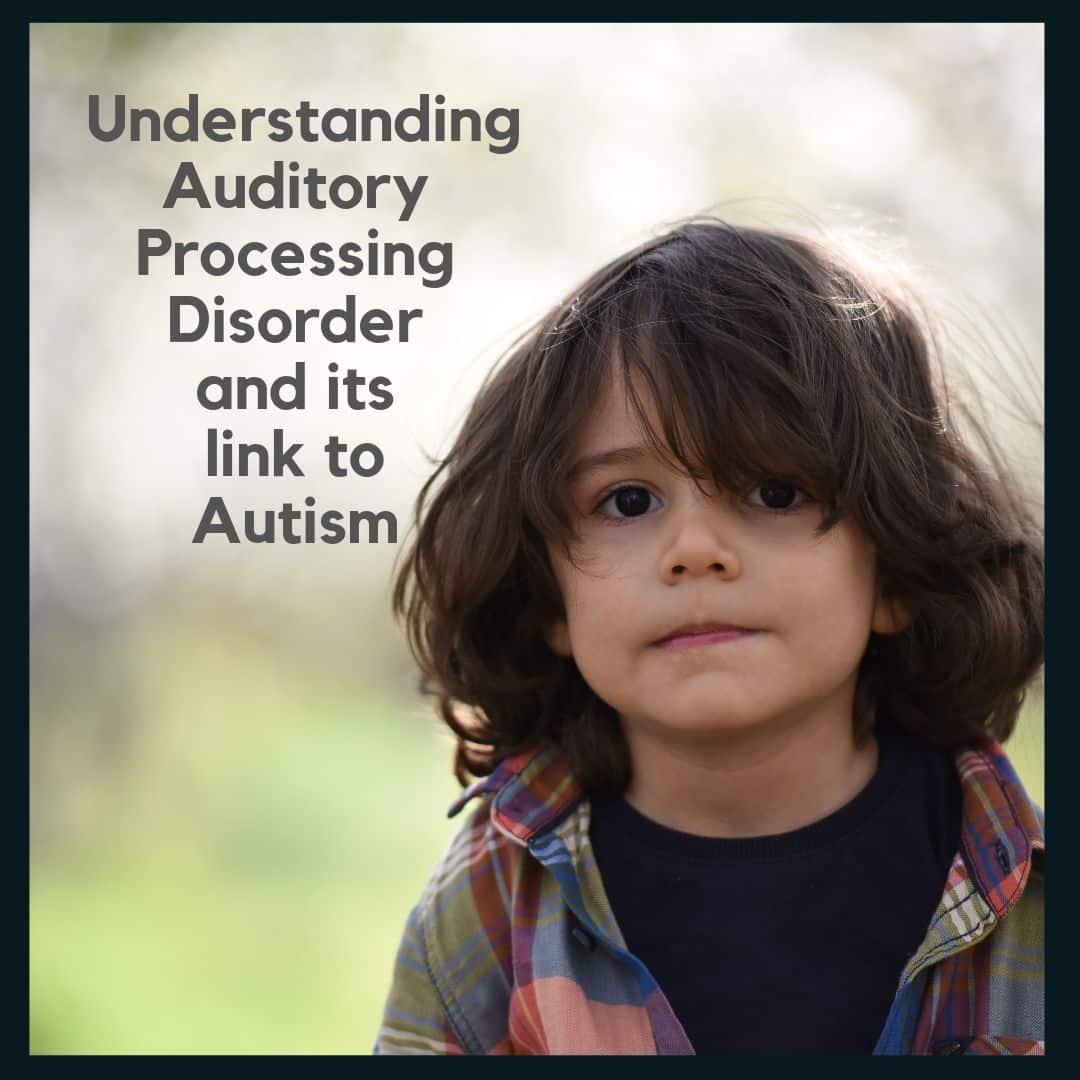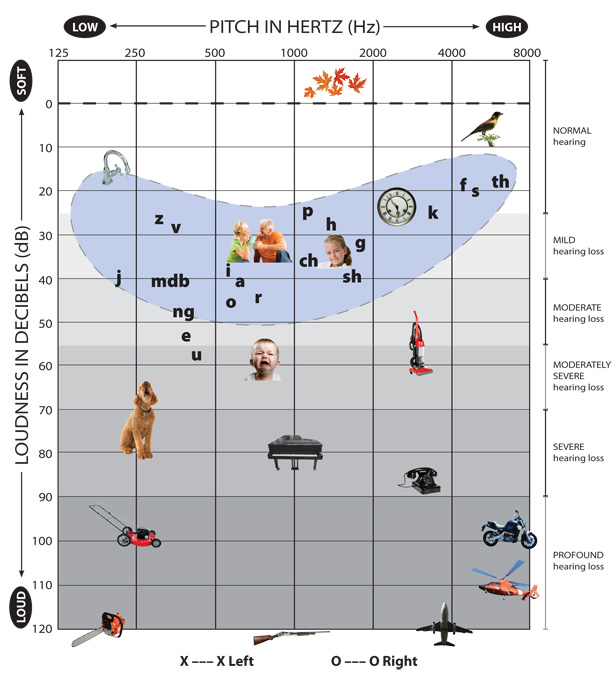Auditory Processing Disorder and Autism
August 27, 2019

When I asked my daughter to put her toys on the shelf, she misunderstood my request and spent the next twenty minutes drawing me a picture. Naturally, I returned to her messy room, took one look at the toys scattered on the floor, and proceeded to reprimand her for not listening. Just then, she burst into tears and cried, “But you said to draw an elf!”
This is a small peak into a day in the life with a child with auditory processing disorder (APD), also called central auditory processing disorder (CAPD). For children with APD, a basic parent/child interaction can be wrought with misunderstandings, missed cues, clueless looks, and frustrating miscommunications. As the child enters school, their APD is often misunderstood, and they are diagnosed with attention deficit hyperactivity disorder (ADHD) or learning disabilities.
For families who have children on the autism spectrum, it’s also important to understand how APD may be impacting your child’s ability to understand auditory information. Often, children with autism spectrum disorder (ASD) demonstrate atypical processing of auditory input. Trends across numerous studies suggest, “the ability to accurately process and interpret auditory information is often difficult.”[1]
Sometimes a child may show hypersensitivity to certain sounds, leading them to feel distressed, shield their ears, or scream.
In many cases, individuals on the autism spectrum have an increased sensitivity to sound, which may make them feel over-aroused, overwhelmed, or distressed. These individuals show lower loudness discomfort thresholds. For example, sounds below 80 db(HL) are more likely to be distressing. This is significant, because normal conversation is about 60 db compared to a lawn mower, which is about 90 db.

In addition, research suggests individuals with autism “may be more susceptible to distraction from auditory stimuli.”[2] This hypersensitivity makes noisy environments upsetting, and the problem behaviors that result, are simply an individual’s coping method for feelings of anxiety or stress.
What is auditory processing disorder (APD)?
APD is a breakdown between what the ear hears and what the brain understands. Most children with APD have normal hearing; however, they still struggle to understand what people say.[3]
For children with APD, their ability to process sound is delayed. It’s like a glitch in the ear/brain connection.
APD is not hearing loss. In fact, children with APD may have normal audiograms. It is not about the ear’s ability to detect sound; It is about a disruption in the brain’s ability to process or translate the sound that is heard.[4]
Interestingly, there is a great deal of evidence that suggests that “autistic individuals appear to show superior pitch perception and better identification of, and memory for, musical notes.” Many studies indicate that they have enhanced perception, both visual and auditory; however, this condition is disturbing, confusing, and distracting at times. [5] Therefore, a better understanding of Auditory Processing Disorder may help parents and teachers as they seek accommodations to address this particular aspect of autism spectrum disorder.
Does Hearing Loss Effect APD?
A child with mild, severe, or profound hearing loss in one or both ears can exhibit many if not all of the same symptoms as APD. These conditions can co-exist. According to research conducted in the Netherlands, even mild sensorineural hearing loss has a detrimental effect on auditory processing. This is significant, because although every child with APD does not have hearing loss, every child with hearing loss does have some degree of APD.[6]
What are some of the symptoms of APD? [7]
APD symptoms can range from mild to severe, and children diagnosed with APD can exhibit one, some, or all of these symptoms:
- Poor listening comprehension
- Difficulty following oral directions
- Short term auditory memory
- Low scores on auditory subsections of standardized tests
- Inability to localize sound. Sound localization is the ability to recognize where a sound comes from.
- Difficulty with auditory discrimination. This is the ability to distinguish between sounds, such as the phoneme /p/ and /b/. For example, rope and read, or price and prize.
- Poor auditory pattern recognition or sequencing. For example, a child may hear 425 but write 542.
- Difficulty following multi-step instructions.
- Easily distracted, especially in environments with ambient noises.
- Difficulty spelling or reading.
- Struggle to follow conversations.
- Poor recall of details they’ve heard or read.
- Some children have speech problems or unclear speech.
How common is auditory processing disorder?
It’s estimated that 2 to 7 percent of children have APD, but according to Autism Speaks, “80% of children with autism process sounds in atypical ways.”[8]
How is APD diagnosed?
If you suspect that your child may have APD, it’s important to rule out hearing loss. Chronic ear infections may also impact hearing, so the first step is to make an appointment with a pediatrician. Then make an appointment with an audiologist, because only a trained audiologist can diagnosis APD. Unlike a pediatrician, an audiologist can also identify hearing loss should this be an issue. Hearing loss can be detected from birth; however, APD is typically recognized after age 7 or 8, when auditory skills are more developed.
Children on the autism spectrum, children with hearing loss, or typical hearing children with auditory processing disorder qualify for a 504 Plan according to Rehabilitations Act. Click here to better understand the 504 Plan, who is eligible for a plan, and how it can help your child be more successful in school.
To qualify for a 504 Plan, the first step is to write an email addressed to the school’s principal and/or the school’s guidance counselor. In the letter, you will express your concerns and request a meeting to discuss how a 504 Plan could benefit your child . Click here for a 504 Plan sample letter.
[1] O’Connor, K. (2012). Auditory processing in autism spectrum disorder: A review. Neuroscience and Biobehavioral Reviews, 36(2), 836-854. https://www.sciencedirect.com/science/article/pii/S0149763411002065
[2] Remington, Anna and Fairnie, Jake. (2017). A sound advantage: Increased auditory capacity in autism. Elsevier B.V. https://reader.elsevier.com/reader/sd/pii/S0010027717300963?token=3685F79A18CF27E0C60B47BA55190B417509419E23B6C2CD155B4BBDF54B07BE6D580169598D0045ADB2FBE0119E2E09
[3] The Understood Team. (2014-2019). Understanding Auditory Processing Disorder. Understood: For Learning and Attention Issues. https://www.understood.org/en/learning-attention-issues/child-learning-disabilities/auditory-processing-disorder/understanding-auditory-processing-disorder – item0
[4] Hearing Health Foundation. (2019). Auditory Processing Disorder.
[5] Bonnel, A.M. (2003). Enhanced pitch sensitivity in individuals with autism: A signal detection analysis. Journal of Cognitive Neuroscience, 15(2), 226-235.
[6] Karin Neijenhuis, Hans Tschur, and Ad Snik. (2004). The Effect of Mild Hearing Impairment on Auditory Processing Tests. Semanticscholar.org. https://pdfs.semanticscholar.org/78fd/7a401f2fc192df9d0777cb7973e20ebca024.pdf
[7] Young, Maxine L. “Recognizing and Treating Children with Central Auditory Processing Disorders.” Scientific Learning. http://www.scilearn.com/alldocs/mktg/10035-952MYoungCAPD.pdf
[8] Autism and auditory processing disorder: What’s the connection? (2018). Autism Speaks. https://www.autismspeaks.org/expert-opinion/autism-and-auditory-processing-disorder-whats-connection
